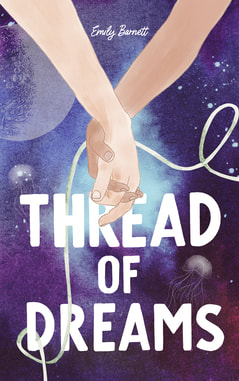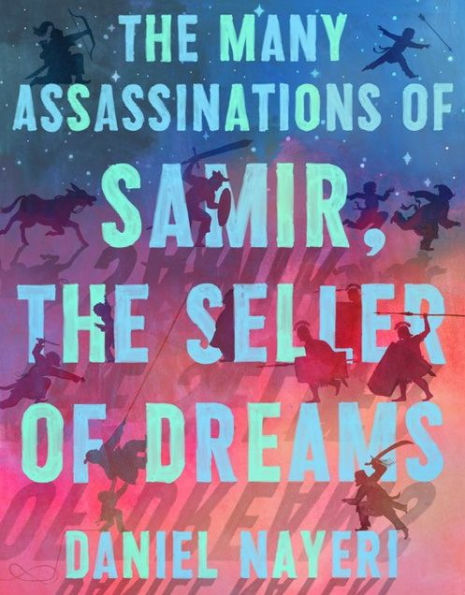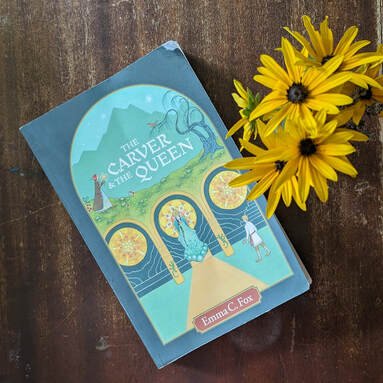|
I used to be a huge fan of Young Adult books. Back in 2009, when I started reviewing books, I’d be sure that on every trip to the library, I picked up at least one book from the teen section. There was a lot I had loved about being a teenager, and it was special to see those experiences recreated on the pages of books. The circumstances were different, of course, but the feelings were there. The tension between being a child and being an adult...the fear of being asked to grow up too quickly...the pride at being able to step into the world of business and academics...the startling wonder of falling in love...
And then, somewhere along the line, the trends got darker and more intense and I no longer saw much of myself at all in those stories. Instead, the middle grade that I had always loved became more and more mature, until I mentally (and often literally) had to label them as “Early Middle Grade” and “Upper Middle Grade.” The Upper Middle Grade category had more or less replaced what YA used to be. Change is inevitable, and while I could lament this one at more length, it serves little purpose. Publishers publish what they think will sell, and the consumers determine the market. Tastes vary. I was in the minority, apparently. I thought I was alone altogether. But I’m just beginning to see a shift, a shift that tells me that more and more consumers are hoping for YA books with a little more innocent love, a little less passion; a little less violence, a little more adventure. More wonder. More newness. More overcoming of that good old teenage angst and less of letting it define us. On the front lines of this shift are the books of Owl’s Nest Publishers—a fairly new publishing house that has impressed me tremendously with the quality and content of their books. So let’s move on the actual review part of this essay, shall we, before my soap box tumbles? Thread of Dreams, by Emily Barnett, is a YA fantasy about a girl named Nova who lives in a world called Lyra—a world with no sun, where the moon shines at night and darknight is a time where evil and danger lurks. Lyra is connected to Earth through a rift that allows Lyran harvesters, such as Nova, to enter the dreams of humans and harvest moments of these dreams as threads that provide energy and power in Lyra. The humans can’t see the Lyrans—or they shouldn’t be able to. But one day Nova enters the dream of a boy named Arlo, who very much sees her and very much wants to know what she’s doing in his subconscious. Alight with the possibility that the world is not so closed off and hopeless as the Ancients of Lyra would have her believe, Nova finds a way to visit Arlo again and again...until an accident puts them both—and possibly Nova’s entire world—at risk. C. S. Lewis once said, “Even in literature and art, no man who bothers about originality will ever be original: whereas if you simply try to tell the truth (without caring twopence how often it has been told before) you will, nine times out of ten, become original without ever having noticed it.” Thread of Dreams is a good example of this. It feels wholly original and new to me. Yet it reminded me strongly of some of my favorite books: The Chronicles of Narnia, A Wrinkle in Time, even slightly of the more recent Lunar Chronicles. But it was not because Thread of Dreams was derivative in any way. Emily Barnett didn’t steal any plot points. She simply told the same truth. And some of those truths that Thread of Dreams tells are the very truths that drew me to the YA genre in the first place: Growing up means learning to let go of ourselves to find who we truly are. There is power in family and friendship and romantic love—different loves that we need at different moments. Wisdom lies in accepting oneself while still trying to better oneself. And the great, overarching truth: Love is stronger than hate. It will always overcome. Thread of Dreams releases on March 28, but you can pre-order it now from Owl's Nest, and I encourage you to do so! I highly recommend it for ages 12 (or a mature 11) and up.
0 Comments
They say don’t judge a book by its cover. I try not to. I do, however, judge most books—at least a smidgen—by their first sentence. And The Many Assassinations of Samir, Seller of Dreams begins with a five star string of words. “The first time I was stoned to death by an angry mob, I was not even a criminal.” I didn’t even mean to keep reading (I have a to-read list a mile long, after all!) but I couldn’t help myself after a sentence like that. I was immediately pulled along with Omar (soon nicknamed Monkey) and his delightful, wheedling, story-selling master Samir as they sell their wares and wheedle for their lives along the ancient Silk Road.
This story is hard to summarize without spoilers, as so much depends on you following along with Monkey’s spellbinding narration. So, just to be sure I don’t say too much, here is how the publisher took on this difficult task: This is the tale of an exciting journey along the Silk Road with a young Monk and his newfound guardian, Samir, a larger than life character and the so-called “Seller of Dreams”. The man is a scammer; his biggest skill being the ability to talk his way into getting what he wants. While that talking did save Monkey’s life, it has left a lot of people furious with Samir— furious enough to hire assassins. Monkey decides to try and save Samir from the attempts on his life—as a way to pay off his debt! If he can save Samir six times, he’ll be a free man...but will they all survive that long? I loved the drama. I loved the perfectly timed and humorously handled forays into philosophy. I loved Monkey, with his uptight and cautious ways, and I loved Samir (the Professor Harold Hill of the Silk Road, if ever there was one). And I loved the storytelling most of all. Like Nayeri’s masterpiece Everything Sad is Untrue, this book is full of beautiful scenes and beautiful sentences and beautiful sentiments. Storytellers, you have a lot to learn on its pages. Story lovers, I defy you not to be entranced. For more Marvelous Middle Grade Monday recommendations, visit Always in the Middle! I remember the first time I cracked open The Lion, the Witch, and the Wardrobe—I was ten or so, I think? Like the Pevensy children, I fell right into the world of Narnia and never looked back. I didn’t need to get used to the world or think too hard about justifying the magical system. I just lived and breathed the story. For me, any good fantasy story must have that same element of naturalness. If I can’t fall right into it, it’s probably not the fantasy story for me.
That feeling of naturalness is the first thing that struck me (when I stopped to think about it, which I didn’t right away because the story was so compelling) about Emma C. Fox’s soon-to-be-released The Carver and the Queen. The story follows Petr, an orphaned Russian serf who longs to become a renowned and succesful carver of malachite, and Lena, the housemaid to Petr’s teacher who likewise dreams of better things, particularly things better than the arranged marriage to the town’s cruel bailiff. In the process of chasing his dream and his chance to win his and Lena’s freedom, Petr falls into league with Malachanitsa, a cunning sorceress, queen of the underground malachite kingdom. The limited magical elements (no keeping track of complicated systems here!) and battles between gain and selflessness, good versus evil—and of course the alluring evil queen—kept up the Narnia vibes throughout the entire story. It also reminded me, in its fantasy/historical setting and lyrical prose, of Shannon Hale’s early works, particularly The Goose Girl and the other Books of Bayern. It would probably appeal most to readers of the same age as those books as well—advanced 11-year-old readers through teens (and adults, as well!). The Carver and the Queen releases October 3, but you can preorder it now. Many thanks to Owl’s Nest Publishers for the review copy of this book—my delighted opinions are entirely my own. |
About meHi! I'm Faith. I blog about books and creativity, family and faith. Welcome! Archives
November 2023
Categories
All
|



 RSS Feed
RSS Feed